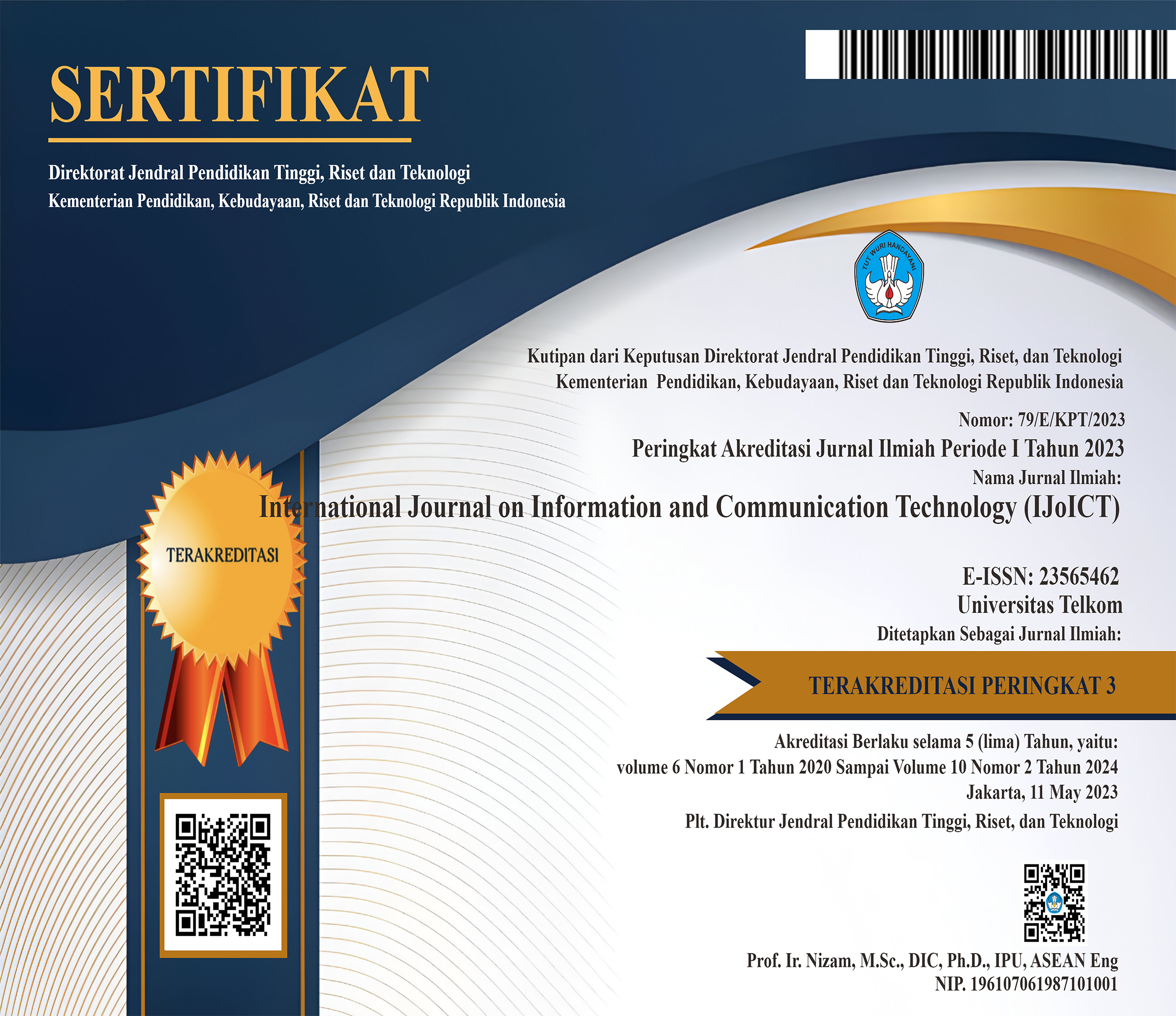Conversational Recommender System with Explanation Facility Using Semantic Reasoning
 Abstract views: 1072
,
Abstract views: 1072
,
 PDF downloads: 837
PDF downloads: 837
Abstract
Conversational recommender system is system that provides dialogue as user guide to obtain information from the user, in order to obtain preference for products needed. This research implements conversational recommender system with knowledge-based in the smartphone domain with an explanation facility. The recommended products are obtained based on the functional requirements of the user. Therefore, this study use ontology model as a knowledge to be more flexible in finding products that is suitable with the functional requirements of the user that is by tracing a series of semantic based on relationships in order to obtain the user model. By exploiting the relationship between instances of user models, the explanation facility generated can be more natural. Our filtering method uses semantic reasoning with inference method to avoid overspecialization. The evaluation show that the performance of our recommender system with explanation facilities is more efficient than the recommendation system without explanation facility, that can be seen from the number of iterations. We also notice that our system has accuracy of 84%.
Downloads
References
Smyth, B., McGinty L., Reilly, J., and McCarthy, K., (2004). Compound Critiques Feedback for Conversational Recommender Systems, In: The IEEE/WIC/ACM International Conference on Web Intelligence (WI-04), Beijing, China Crossref
Blanco-Fernandez, Y., Pazos-Arias, J. J., Gil-Solla, A, Ramos-Cabrer, M., Lopez-Nores, M., Garcia-Duque, J., Fernandez-Vilas, A, Diaz-Redondo, R. P., and Bermejo-Munoz, J., (2008). A Flexible Semantic Inference Methodology to Reason About User Preferences in Knowledge-Based Recommender Systems, Knowledge-Based Systems, vol. 21, no. 4, pp. 305-320, Crossref
Blanco-Fernández, Y., Pazos-Arias, J. J., Gil-Solla, A., Ramos-Cabrer, M., and Lopez-Nores, M., (2008). Providing Entertainment by Content-based Filtering and Semantic, IEEE Transactions on Consumer Electronics, vol. 54, no. 2, pp. 727-735 Crossref
Tintarev, N., and Masthoff, J., (2011). Designing and evaluating explanations for recommender systems, In: Recommender Systems Handbook, F. Ricci, L. Rokach, B. Saphira dan P. B., New York: Springer US, pp. 479-510. Crossref
Widyantoro, D. H., and Baizal, Z. K. A., (2014). A Framework of Conversational Recommender System Based on User Functional Requirements, In: The 2nd IEEE Conference, International Conference on ICT. Crossref
Neches, R., Fikes, R. E., Finin, T., Gruber, T., Patil, R., Senator, T. and Swartout, W. R., (1991). Enabling Technology for Knowledge Sharing, AI MAGAZINE, vol. 12, no. 3, pp. 36-56
Banowosari, L. Y., and Wicaksana, I. W. S., (2006). Tinjauan Similaritas Semantik Dalam Pemeliharaan ontologi Pada Peer-To-Peer (P2P), In: Komputer dan Sistem Intelejen (KOMMIT2006), Jakarta,.
Billsus, D., and Pazzani, M. J., (1999). A Personal News Agent That Talks, Learns and Explains, In: AGENTS '99 Proceedings of the third annual conference on Autonomous Agents, New York
Hu, B. dan Aufaure M., (2013). A Query Refinement Mechanism for Mobile Conversational Search in Smart Environments, In: Intelligent User Interface 2013 Workshop on Interacting with Smart Objects, Santa Monica, USA,.
Supranto, J., Statistik: Teori dan Aplikasi, Jakarta: Erlangga, 2001.
Walpole, R. E., (1995). Pengantar Statistika, Jakarta: Gramedia Pustaka Utama, p. 516.
Cao, Y. and Li, Y., (2007). An Intelligent Fuzzy-Based Recommendation System for Consumer Electronic Products, Expert Systems with Applications, vol. 33, no. 1, p. 230–240, Crossref
Olmo, F. H. and Gaudioso, E., (2008). Evaluation of Recommender Systems: A New Approach, Expert Systems with Applications: An International Journal, vol. 35, no. 3, pp. 790-804, 01 October.

This work is licensed under a Creative Commons Attribution 4.0 International License.
Manuscript submitted to IJoICT has to be an original work of the author(s), contains no element of plagiarism, and has never been published or is not being considered for publication in other journals. Author(s) shall agree to assign all copyright of published article to IJoICT. Requests related to future re-use and re-publication of major or substantial parts of the article must be consulted with the editors of IJoICT.








.png)

.jpg)




